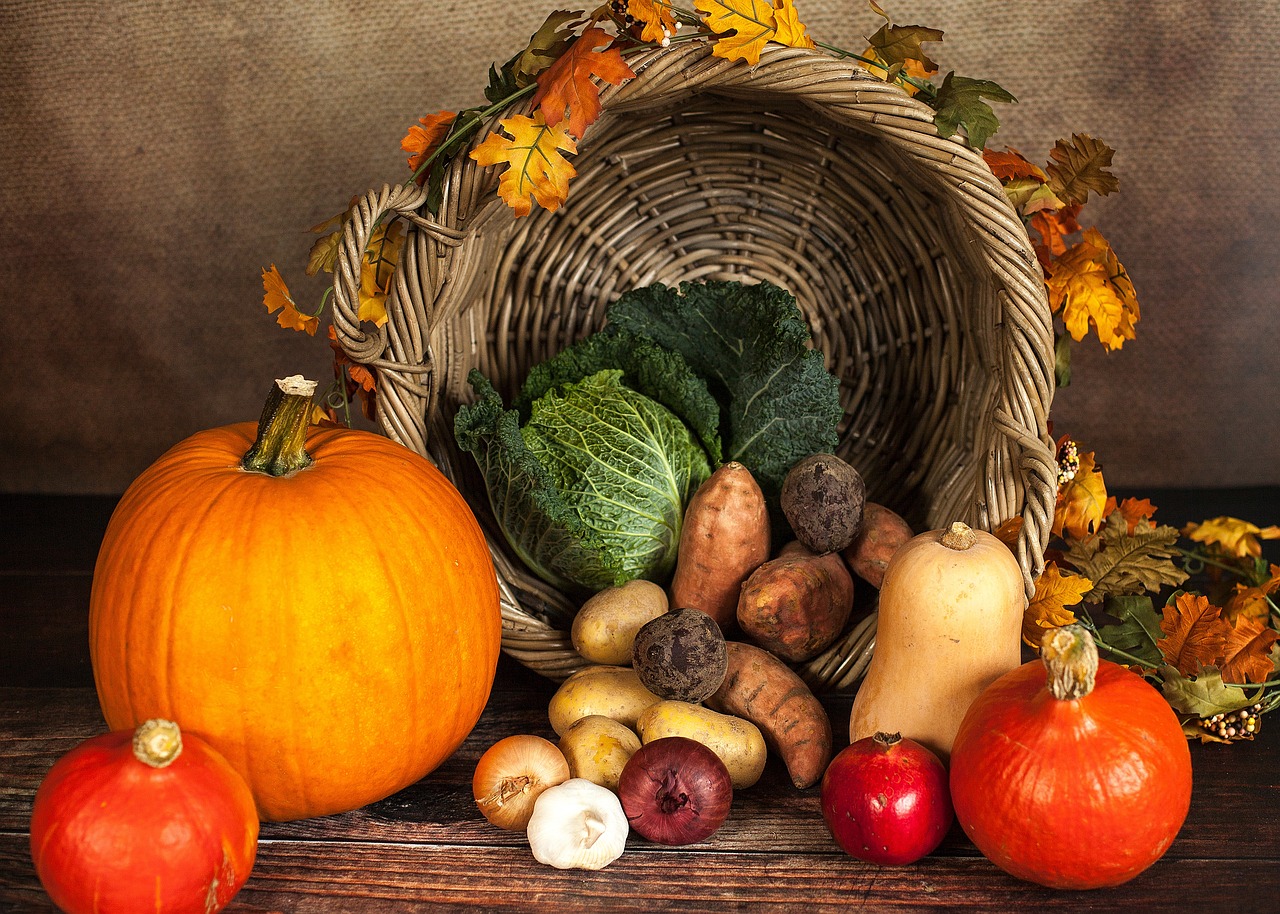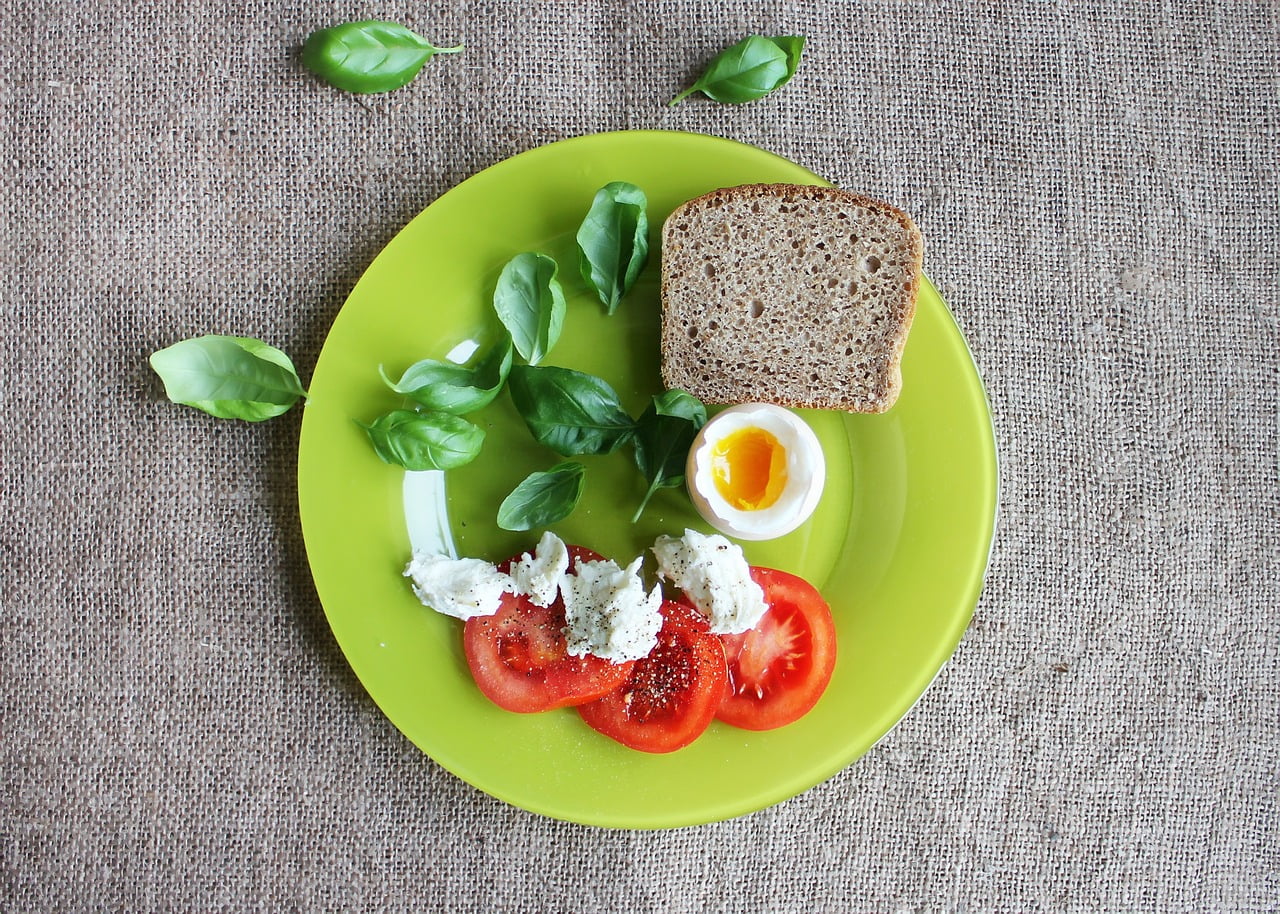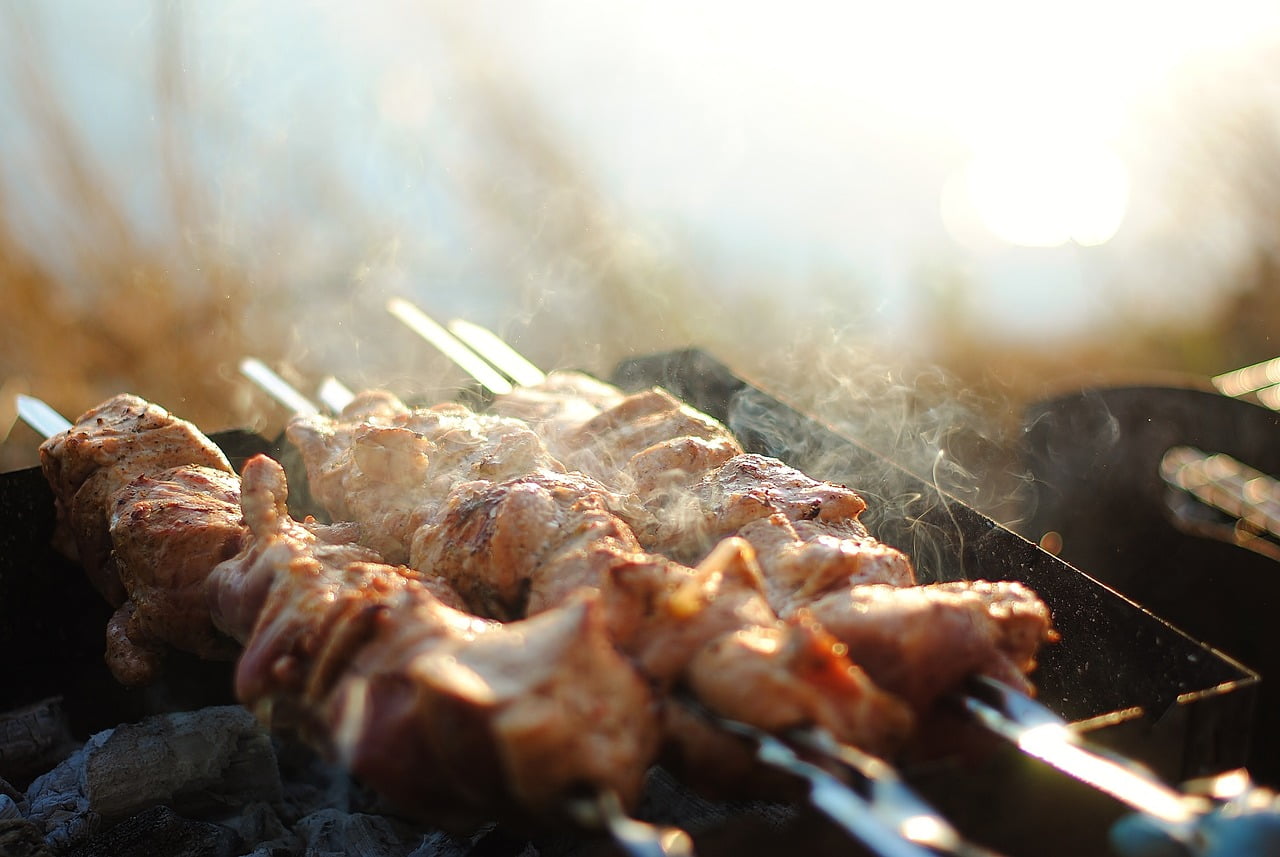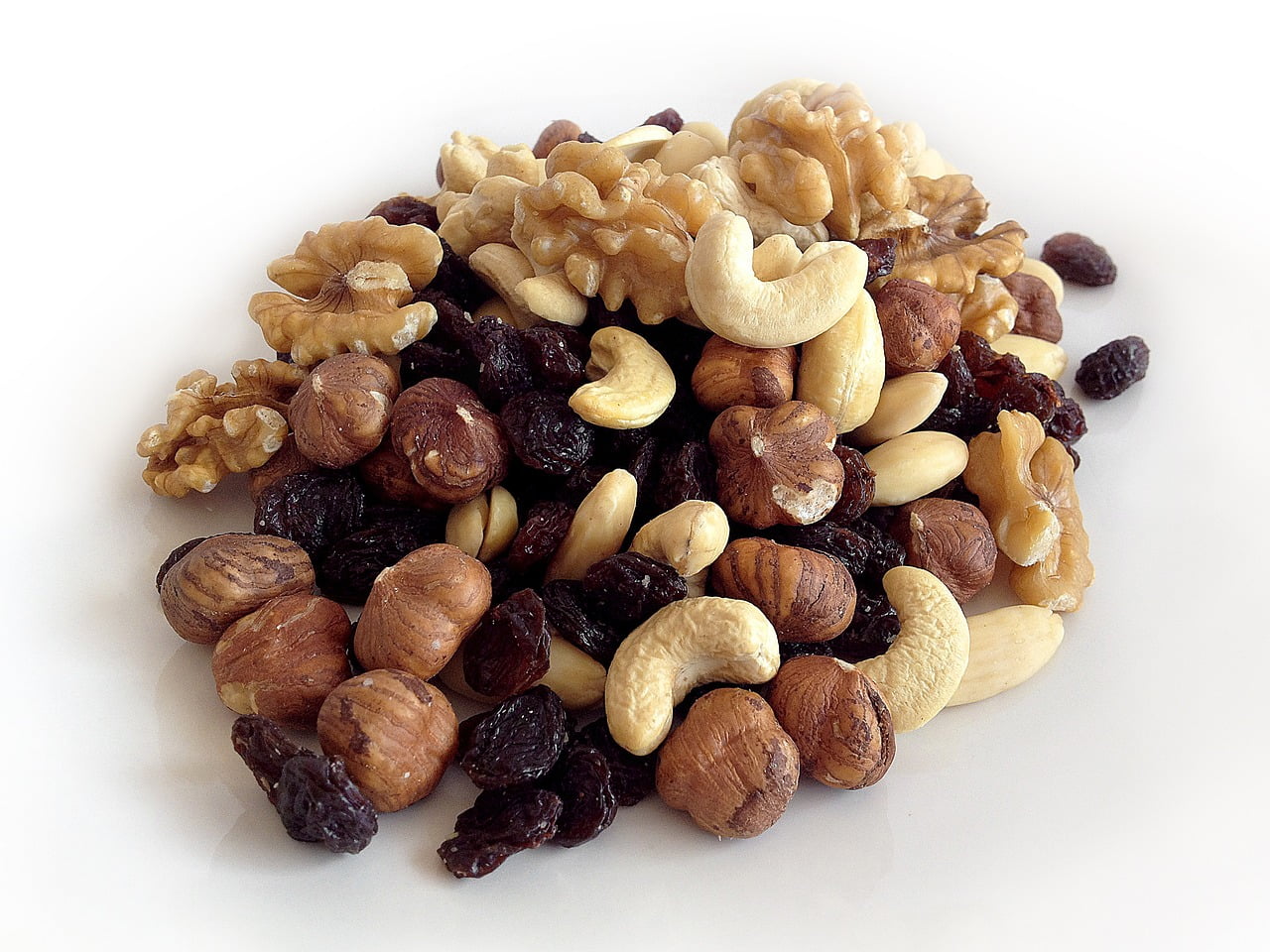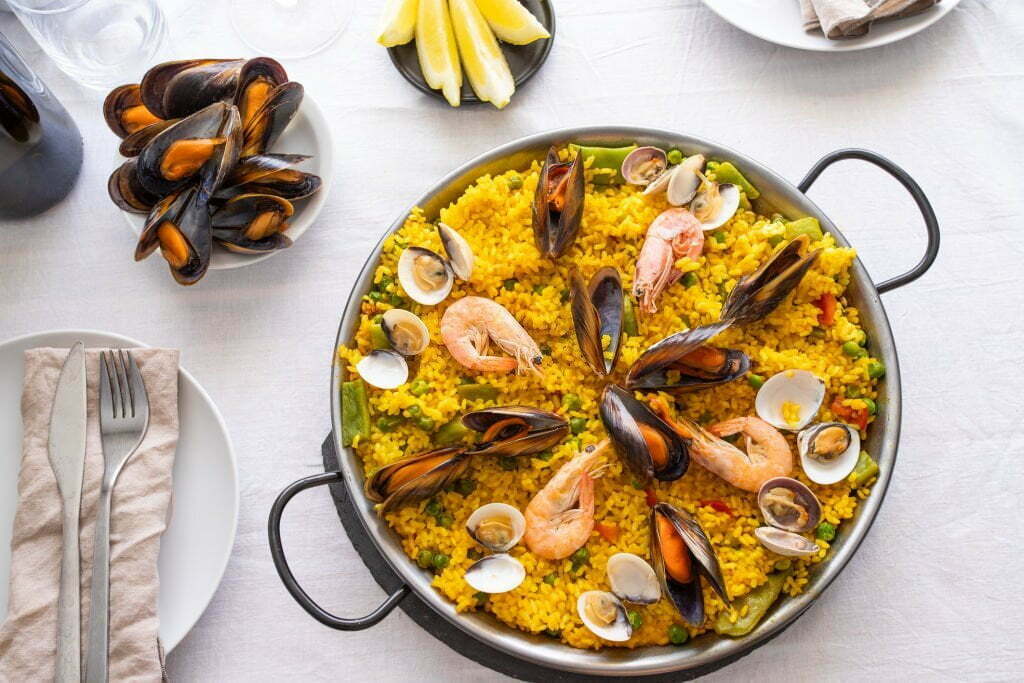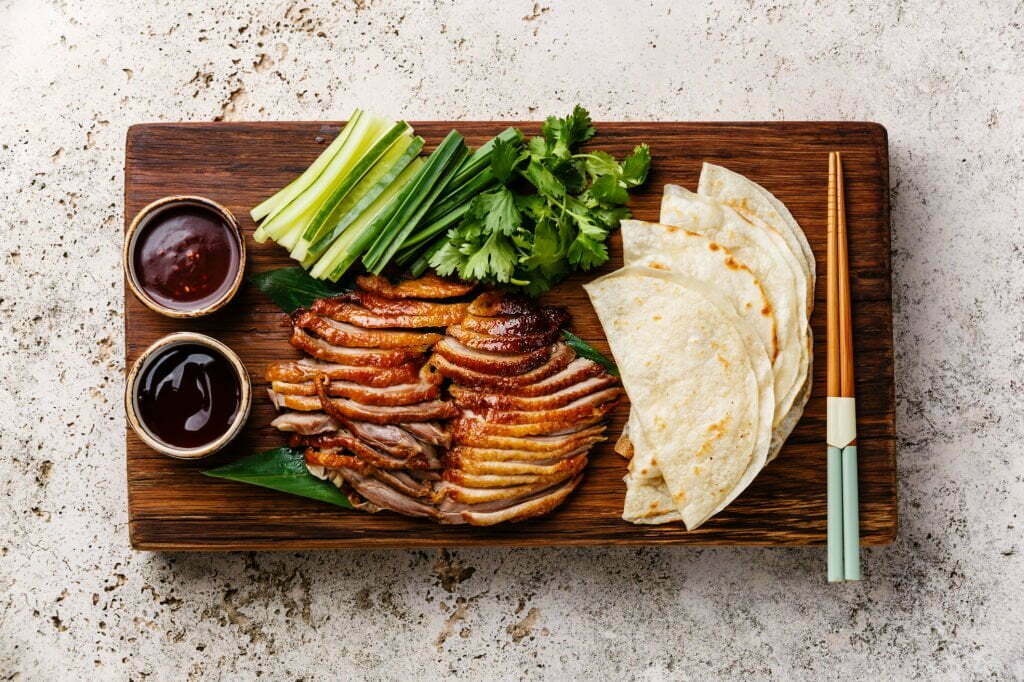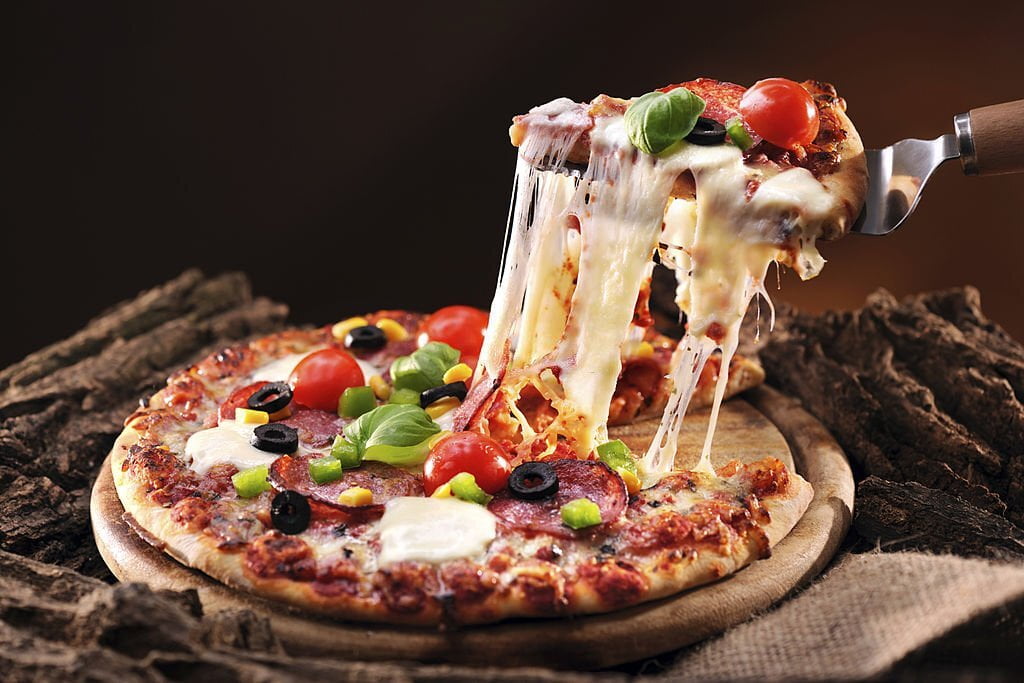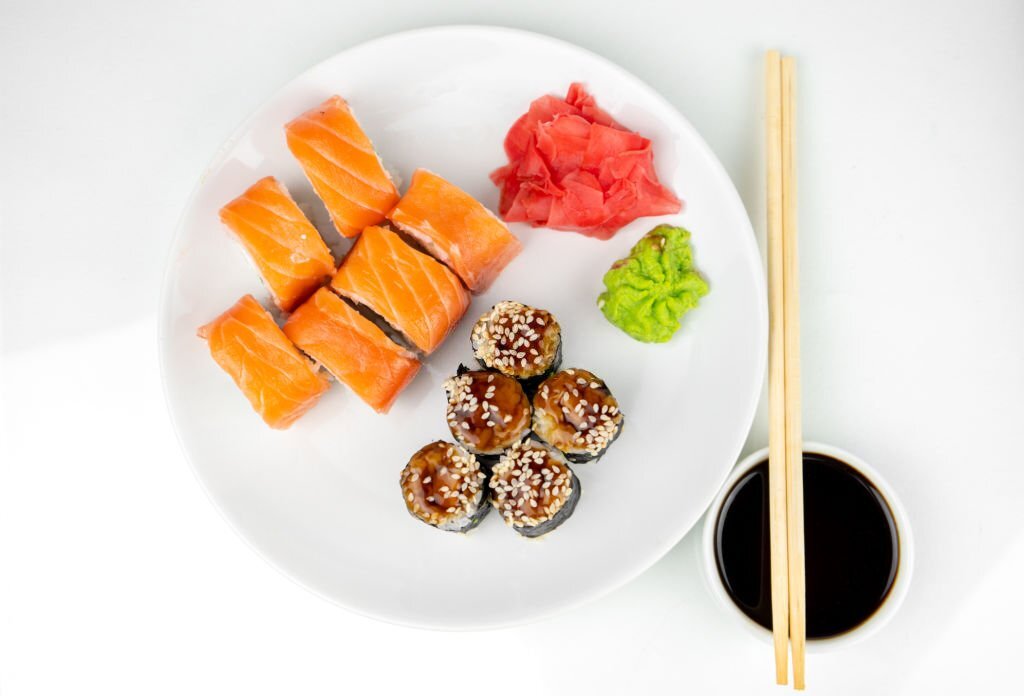Welcome to our comprehensive guide that Explores Pho that delves into the delightful world of Pho! As one of Vietnam’s most iconic culinary treasures, Pho has captured the hearts and taste buds of food enthusiasts worldwide. In this expertly crafted guide, we invite you on an enchanting journey through the history, flavors, and cultural significance of this aromatic Vietnamese soup.
Discover the secrets behind the perfect bowl of Pho as we uncover the art of its preparation, from the slow-simmered savory broth to the tantalizing blend of fresh herbs and spices. Immerse yourself in the vibrant tapestry of Pho’s regional variations, each with its unique character and local twists.
Whether you’re a Pho aficionado or a curious newcomer, our guide provides practical tips on navigating Pho menus, decoding culinary terminology and mastering the art of slurping like a pro. Unearth the hidden gems where you can savor the best Pho in town, and learn how to recreate this culinary masterpiece in your own kitchen.
Embark on this captivating exploration of Pho, and let the flavors of Vietnam transport you to a world of gastronomic delight.
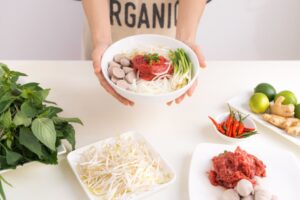
Best Types of Pho Guide Pho that explores it.
Pho Tai (Phở Tái) – Classic Beef Pho:
Pho Tai, the quintessential beef pho, features thinly sliced raw beef that cooks gently in the piping hot broth. The beef is added to the bowl just before serving, allowing it to retain its tender texture and imparting a rich, meaty flavor. This type of Pho showcases the simplicity and elegance of the traditional beef broth and is often accompanied by fresh herbs, bean sprouts, and lime wedges for a burst of freshness.
Pho Ga (Phở Gà) – Chicken Pho:
Pho Ga, or chicken pho, offers a delightful alternative to its beef counterpart. With its light and fragrant broth, this version is made by simmering chicken bones, ginger, and spices to create a delicate yet flavorful base. Tender chicken meat is then added, resulting in a comforting and nourishing bowl of Pho. The toppings typically include herbs, bean sprouts, and chili for a touch of heat.
Pho Bo Vien (Phở Bò Viên) – Beef Meatball Pho:
Pho Bo Vien is a variation that features succulent beef meatballs in place of traditional beef slices. These flavorful meatballs are made by blending ground beef with aromatic herbs and spices, adding a unique twist to the Pho experience. The meatballs are cooked in broth and paired with the usual accompaniments, creating a hearty and satisfying bowl of Pho.
Pho Chay (Phở Chay) – Vegetarian Pho:
Pho Chay caters to vegetarians and vegans, offering a meat-free version of this beloved dish. The flavorful vegetarian broth is often made with vegetable stock, aromatic herbs, and spices. It is then served with an array of fresh vegetables, tofu, and vegetarian protein substitutes, providing a delightful medley of textures and flavors. Chay with Pho is a perfect choice for those seeking a lighter and plant-based Pho experience.
Pho Dac Biet (Phở Đặc Biệt) – Special Combination Pho:
Pho Dac Biet is the ultimate Pho experience, combining a variety of meats and toppings into a single bowl. This type of Pho usually includes beef slices, beef meatballs, brisket, and tendons, resulting in a robust and complex flavor profile. The toppings are often generous, ranging from fresh herbs and bean sprouts to additional condiments such as hoisin sauce and Sriracha, offering a burst of flavor in every spoonful.
These five top types of Pho represent the diversity and creativity within this beloved Vietnamese dish, ensuring that there is a Pho variation to suit every palate.

The History of Pho
Pho, a beloved Vietnamese dish, has a rich and fascinating history that spans over a century. Rooted in Vietnamese culture, this iconic soup has become a symbol of the country’s culinary heritage. Let’s delve into the captivating story behind the origins and evolution of Pho.
Origins in Northern Vietnam:
Pho originated in the early 20th century in Northern Vietnam, specifically in Hanoi and its surrounding regions. It is believed to have been influenced by French colonialism, blending Vietnamese flavors with French culinary techniques. The dish originally consisted of rice noodles, slices of beef, and a fragrant broth simmered for hours.
Evolution and Southern Influence:
As Pho gained popularity, it gradually spread southwards to Saigon (now Ho Chi Minh City) and other southern regions of Vietnam. Along the way, it underwent modifications to suit the local taste preferences. The southern version introduced additional herbs, bean sprouts, and lime wedges as garnishes, adding freshness and tanginess to the dish.
Symbol of Resilience and National Identity:
During the Vietnam War and subsequent periods of conflict, Pho played a significant role in sustaining the Vietnamese people. It became a staple food for soldiers and civilians alike, symbolizing resilience and national unity. Pho’s accessibility, affordability, and comforting nature made it an enduring symbol of Vietnamese identity and cultural pride.
Global Popularity:
In the late 20th century, with the Vietnamese diaspora spreading across the globe, Pho transcended borders and gained international recognition. Vietnamese communities established Pho restaurants in various countries, introducing this delectable dish to a wider audience. Its popularity soared, with Pho becoming a beloved staple in many cities around the world.
Culinary Innovation and Adaptation:
In recent years, Pho has continued to evolve, incorporating modern culinary trends and creative interpretations. Chefs and home cooks experiment with different protein choices, vegetarian options, and regional variations, showcasing the adaptability and versatility of this timeless dish.
Today, Pho stands as an iconic symbol of Vietnamese cuisine, captivating food enthusiasts with its harmonious blend of flavors, aromatic herbs, and satisfying textures. Its history reflects the resilience, cultural heritage, and international appeal of Vietnam’s culinary traditions.
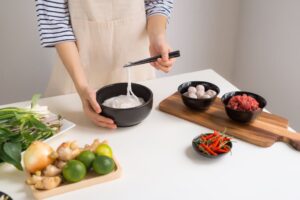
How to Cook Pho at Home
If you’ve ever wanted to recreate the delightful flavors of Pho in the comfort of your own home, look no further. With a few key ingredients and a little patience, you can embark on a culinary adventure and prepare a delicious bowl of Pho from scratch. Follow these steps to bring the authentic taste of Vietnam to your kitchen.
Gather Your Ingredients:
To start, gather the essential components of Pho: beef bones, onions, ginger, cinnamon sticks, star anise, cloves, cardamom pods, fish sauce, and rice noodles. Optional additions include beef slices, and meatballs. Also herbs such as Thai basil and cilantro.
Prepare the Broth:
In a large stockpot, simmer beef bones in water for several hours. Skim off any impurities that rise to the surface. Add onions, ginger, cinnamon sticks, star anise, cloves, and cardamom pods for an aromatic flavor. Allow the broth to simmer gently, infusing the flavors into the liquid.
Strain and Season:
After simmering, strain the broth, discarding the solids. Return the clear broth to the pot and season with fish sauce to taste. Adjust the seasoning as needed to achieve the desired balance of flavors.
Cook the Rice Noodles:
While the broth simmers, cook the rice noodles according to the package instructions. Drain and set aside.
Prepare the Toppings:
Slice beef thinly and prepare any additional toppings, such as meatballs or tofu. Chop fresh herbs like Thai basil and cilantro. Prepare bean sprouts and lime wedges for garnishing.
Assemble and Serve:
To serve, divide the cooked rice noodles into bowls. Arrange the beef slices and other toppings on top. Ladle the hot broth over the ingredients, allowing the residual heat to cook the beef. Garnish with fresh herbs, bean sprouts, and a squeeze of lime. Serve immediately.
Customize and Enjoy:
Each bowl of Pho is an opportunity for customization. Adjust the toppings and condiments to suit your preferences. Add hoisin sauce, Sriracha, or chili oil for additional flavor and heat. Experiment with different protein choices or opt for a vegetarian version by using vegetable broth and tofu.
Now, sit back, savor the aroma, and enjoy the fruits of your labor as you indulge in a homemade bowl of Pho that rivals those from your favorite Vietnamese restaurant.
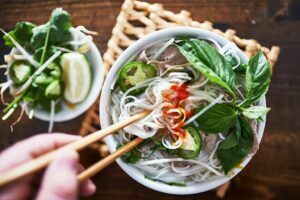
How to Eat Pho With Other Dishes
Pho, with its complex flavors and comforting qualities, is a versatile dish that can be enjoyed on its own or paired with other delectable Vietnamese delicacies. Discover the art of eating Pho alongside complementary dishes, allowing your taste buds to embark on a culinary journey like no other.
Pairing with Spring Rolls:
Spring rolls, fresh and bursting with vibrant flavors, make a delightful accompaniment to Pho. These translucent rice paper rolls filled with a combination of vegetables, herbs, and protein create a textural contrast to the warm and savory Pho. Dip the spring rolls in a tangy and savory sauce, adding a refreshing element to your Pho experience.
Adding Vietnamese Salad:
Enhance your Pho adventure by incorporating a side of Vietnamese salad. Composed of fresh greens, herbs, pickled vegetables, and sometimes grilled meat or tofu, this salad adds a burst of freshness and crunch to your meal. The combination of the light, zesty salad with the rich and hearty Pho creates a harmonious balance of flavors.
Exploring Banh Mi:
Banh Mi, a Vietnamese baguette sandwich filled with an array of savory ingredients, can be enjoyed alongside Pho for a more substantial dining experience. The combination of crusty bread, flavorful fillings such as grilled meats, and pickled vegetables. Aromatic herbs create a delightful contrast to the broth-based Pho. Alternate between bites of Banh Mi and sips of Pho, allowing the flavors to mingle and complement each other.
Sampling Vietnamese Dumplings:
Explore other Vietnamese dumplings, such as Banh Bot Loc or Banh Cuon, to broaden your pho experience. Banh Cuon is a delicate rice flour roll with minced pork and mushrooms whereas Banh Bot Loc is a transparent tapioca dumpling with savoury pork and prawns. When these dumplings are eaten with pho, the combination of textures and flavours enhances the dining experience.
Indulging in Vietnamese Coffee:
Complete your Pho feast with a cup of traditional Vietnamese coffee. Strong and aromatic, this coffee is typically brewed with a small metal drip filter, resulting in a rich and intense beverage. The sweetened condensed milk adds a creamy touch. Sip the coffee between bites of Pho, allowing the contrasting flavors to create a memorable dining experience.
Remember, the art of eating Pho lies in savoring each component individually and combining them in each mouthful to create a symphony of flavors. Experiment with different combinations, allowing your palate to guide you on a culinary adventure that showcases the diverse and delightful offerings of Vietnamese cuisine.
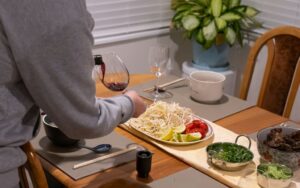
FAQs
What are the main ingredients in Pho?
The main ingredients in Pho typically include beef bones (for the broth), rice noodles, and thinly. Sliced beef or chicken (or vegetarian protein substitutes). Aromatic herbs (such as Thai basil and cilantro). Bean sprouts, lime wedges, and various spices and condiments like ginger, onions, cinnamon, star anise, fish sauce, and hoisin sauce.
Is Pho gluten-free?
Pho can be gluten-free if prepared with gluten-free rice noodles. Gluten-free soy sauce or tamari instead of regular soy sauce. However, it’s essential to check the ingredients and preparation methods of the broth. Any additional condiments to ensure they are gluten-free. Some variations of Pho may contain gluten-containing ingredients like wheat-based soy sauce or wheat-based noodles. So it’s important to confirm before consuming.
Can Pho be made vegetarian or vegan?
It is possible to make pho vegetarian. Also vegan by using vegetable broth instead of meat-based broth. Omitting animal proteins. Meat substitutes such as tofu are available for vegetarians. The toppings, condiments, such as herbs, and bean sprouts. Lime wedges remain the same. It’s important to ensure that any additional condiments or sauces used in the preparation are also vegetarian or vegan.
How do I eat Pho?
Eating Pho is a delightful experience. You can start by adding fresh herbs, bean sprouts, and a squeeze of lime into the bowl. Use chopsticks and a spoon to mix the toppings into the broth. Then, take a bit of noodle, meat. Broth with your chopsticks, and slurp it from the spoon. The spoon helps to scoop up the noodles. Broth while the chopsticks are used to pick up the meat. Is the same with toppings. Feel free to customize the flavors by adding additional condiments like hoisin sauce or Sriracha according to your preference. Enjoy each spoonful, savoring the harmonious blend of flavors and textures that Pho offers.





